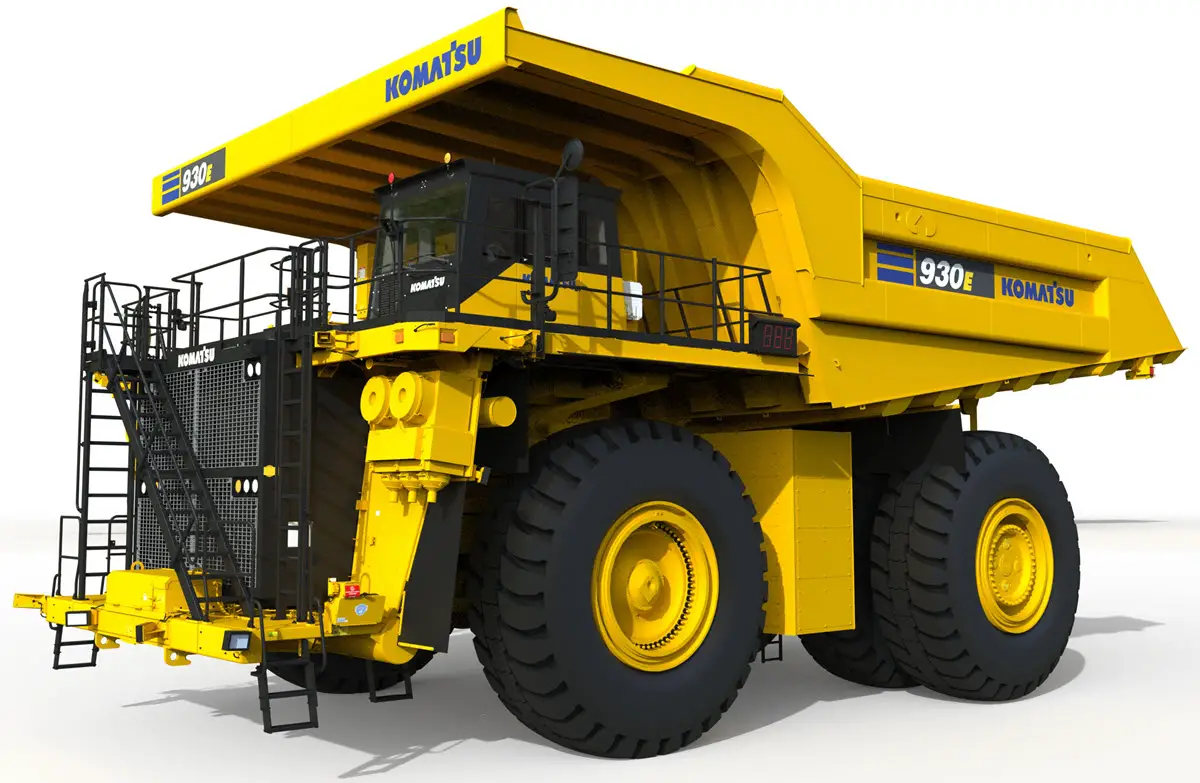Revolutionizing Heavy-Duty Mobility with H2 Powered Mining Vehicles ~ Hydrogen Fuel News

Transforming Mining Vehicles and The Impact of Hydrogen Fuel Cells on Heavy-Duty Mobility
In an exciting development, General Motors (GM) and Komatsu, an industry leader in mining and construction equipment, have joined forces. Their aim? To co-develop a power module based on hydrogen fuel cell technology that will power Komatsu’s 930E electric drive mining truck. This ambitious project hopes to replace the traditional diesel engines currently used in these heavy-duty vehicles with a zero-emission solution. This is a significant step towards decarbonization in heavy-duty applications.
Harnessing the Advantages of Hydrogen Fuel Cells
There are several unique advantages of hydrogen fuel cells that make them particularly suitable for large-scale vehicles like the Komatsu 930E mining truck. These fuel cells are not only lightweight but also quick to refuel. Moreover, they offer a way to store high volumes of energy without reducing the payload capacity of the vehicle. The first prototype of this innovative HYDROTEC-powered mining vehicle is expected to be tested in the mid-2020s at the Arizona Proving Grounds, Komatsu’s state-of-the-art research and development facility.
The Ambitious Sustainability Goals of GM and Komatsu
Both GM and Komatsu have set their sights on ambitious sustainability targets. Komatsu is aiming to reduce its global emissions by a whopping 50% by 2030, with a further goal to achieve carbon neutrality by 2050. On the other hand, GM has set a target to achieve full carbon neutrality in both its products and operations by 2040. This partnership between the two companies serves as a significant step towards these goals, underlining the potential of hydrogen fuel cells in creating a future devoid of emissions.
Other Innovators in the Field
While GM and Komatsu are leading the charge in the field of hydrogen fuel cell technology, they are certainly not alone. Numerous other companies are also exploring the potential of hydrogen fuel cells in the mining industry. For instance, back in 2023, news broke about various companies working on developing hydrogen-fueled mining trucks. This trend indicates a growing interest in hydrogen technology within the mining industry and underlines its potential to contribute to a more sustainable future.
Ballard Power Systems, Adani Enterprises Limited, and Ashok Leyland’s Collaborative Efforts
In 2023, Ballard Power Systems, Adani Enterprises Limited, and Ashok Leyland announced their collaboration to develop a hydrogen mining truck for mining logistics and transportation in India. Notably, this partnership marked the first planned hydrogen-powered mining truck in Asia.
The hydrogen mining truck will be powered by Ballard’s Proton-exchange membrane (PEM) fuel cell technology. With a 200-kilometer working range and a weight of 55 tons, the truck is set to revolutionize the mining logistics and transportation sector in India.
The hydrogen mining truck was set to launch in India around the end of 2023 but there’s still not update on this as of the publication of this article.

The Importance of Decarbonizing the Mining Industry
The mining industry is a key player in the global economy, providing resources for countless products and services that drive our modern life. However, it’s also one of the largest contributors to global greenhouse gas emissions. This is due to the energy-intensive nature of mining operations, which often rely on diesel and other fossil fuels. As the world grapples with the urgent need to reduce greenhouse emissions and combat climate change, decarbonizing the mining industry has become a critical objective.
Anglo American Green Hydrogen Truck Report
Environmental Impact
Mining operations are often energy-intensive and have historically relied heavily on fossil fuels. This reliance contributes significantly to global carbon emissions, leading to climate change. Decarbonizing the mining industry would help reduce these emissions, mitigating the sector’s impact on the environment and helping to slow the pace of global warming.
Regulatory Pressure and Public Perception
Increasingly stringent regulations around the world are pushing industries to reduce their carbon footprints. The mining industry is no exception. Furthermore, public perception is shifting, and there is growing demand for companies to demonstrate their commitment to sustainability. Decarbonization can help mining companies comply with regulatory requirements and improve their public image.
Economic Considerations
While transitioning to low-carbon technologies requires initial investment, it can lead to significant savings in the long run. Renewable energy sources like solar and wind are becoming increasingly cost-competitive. Furthermore, electric vehicles and machinery used in mining operations have lower operating costs compared to their fossil fuel counterparts. Therefore, decarbonization can lead to significant economic benefits for mining companies.
Technological Innovations
Thanks to advancements in technology, it’s now more feasible than ever for the mining industry to move towards decarbonization. Electric vehicles, automation, renewable energy, and energy storage technologies all provide viable ways for mining operations to reduce their carbon emissions. Innovations such as hydrogen fuel cells, as being developed by GM, Komatsu, Ballard Power Systems, Adani Enterprises Limited, and Ashok Leyland, are particularly promising for heavy-duty vehicles like mining trucks.
In conclusion, decarbonizing the mining industry is not just crucial for environmental sustainability, but it also makes good business sense. It’s an opportunity for mining companies to innovate, improve their efficiency, comply with regulations, and enhance their public image. With the right investment and commitment, the mining industry can significantly contribute to a more sustainable future.





